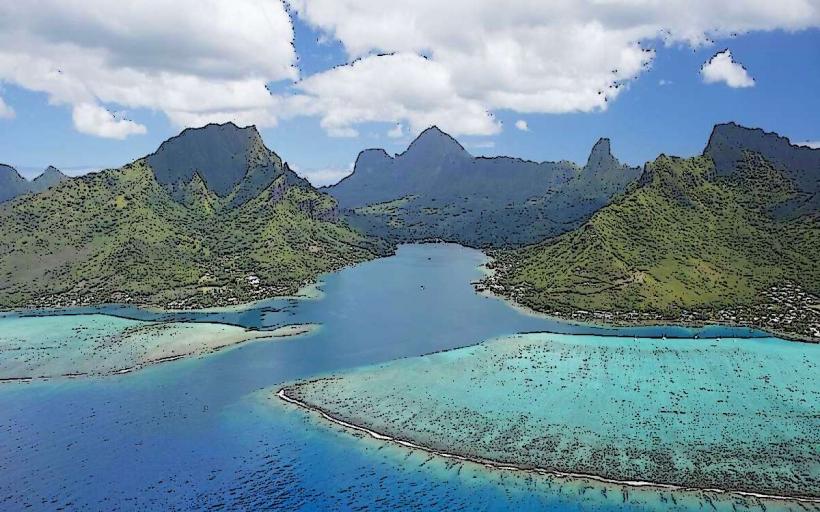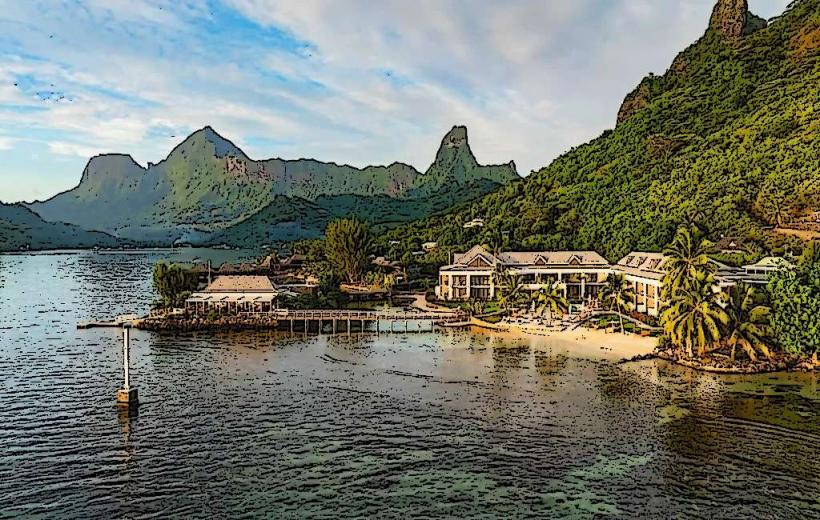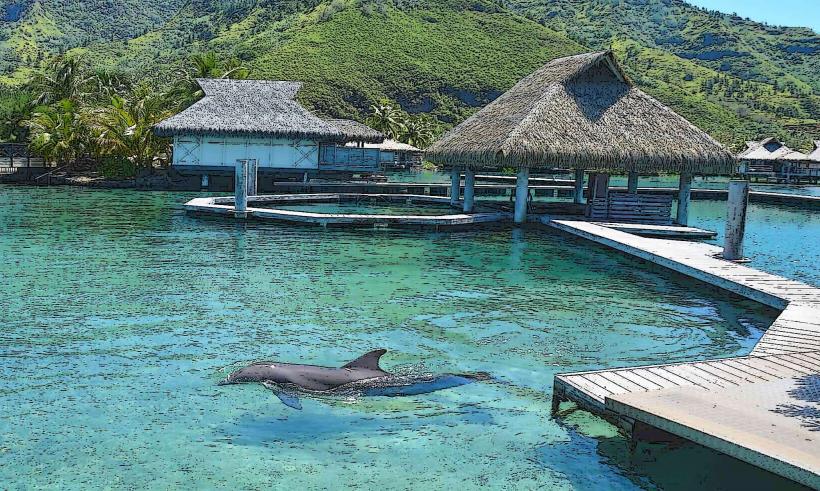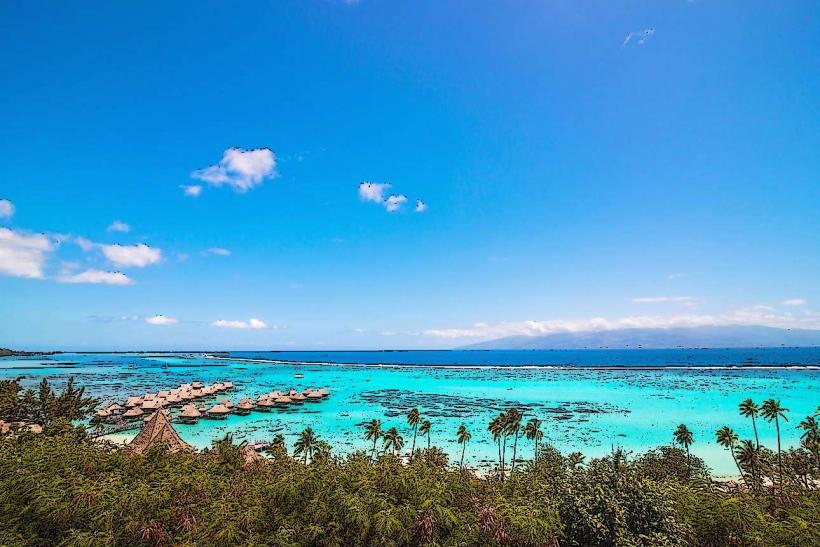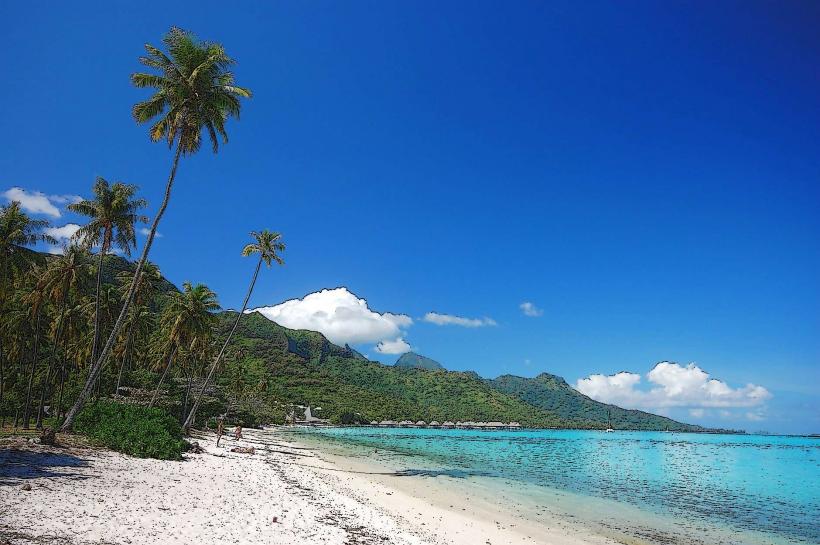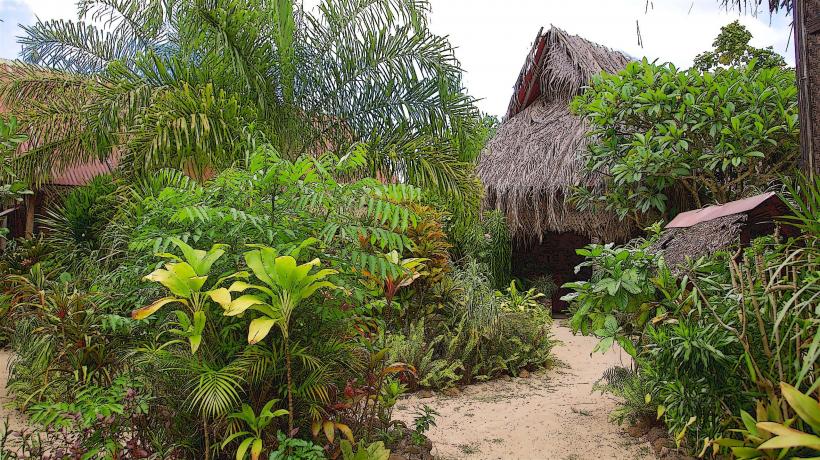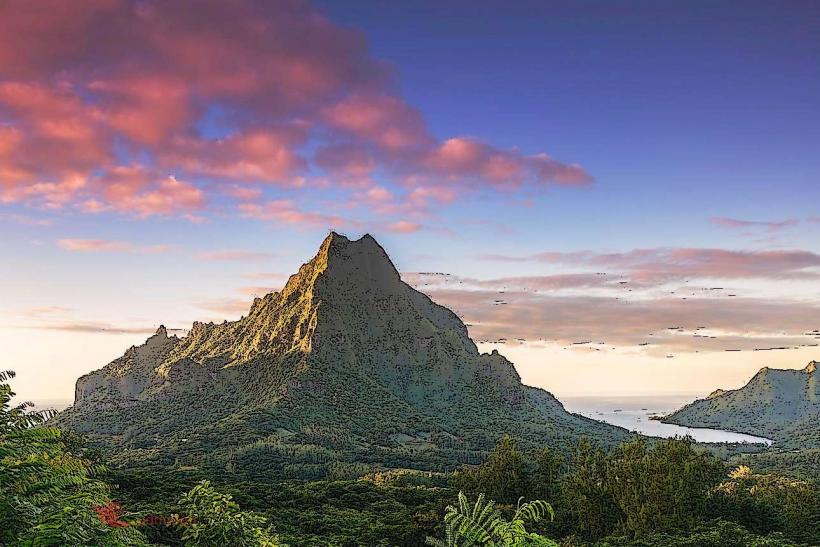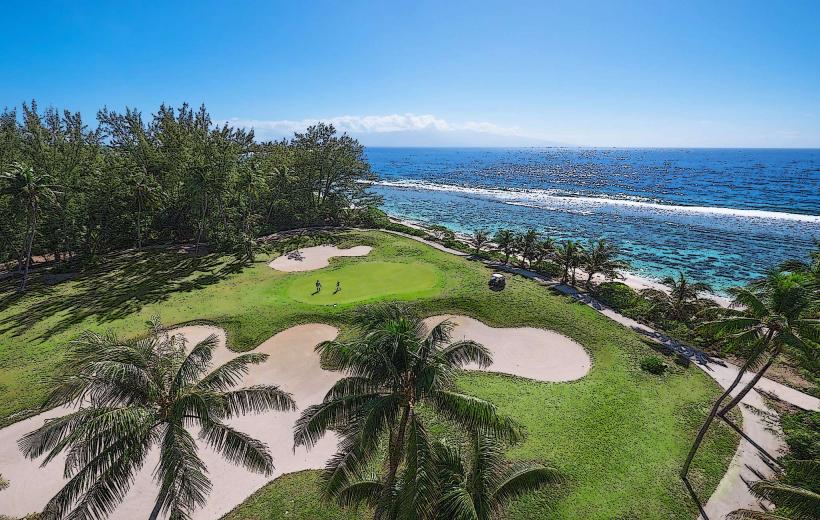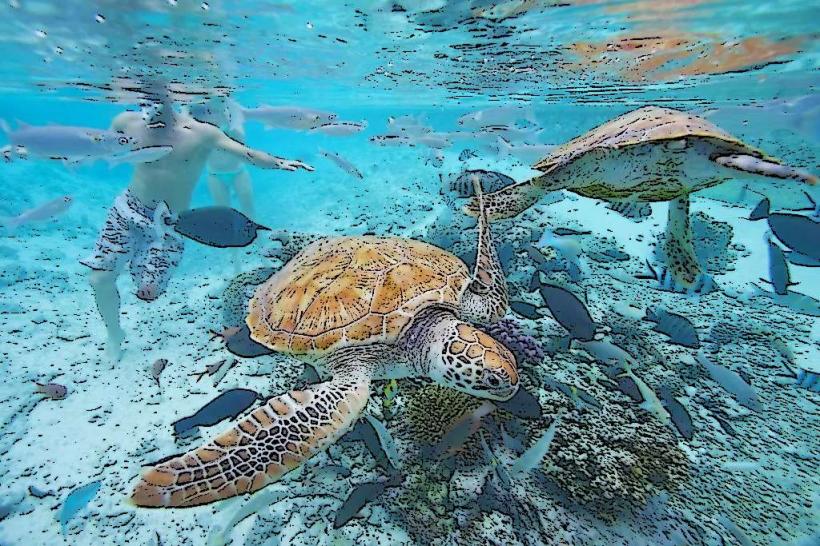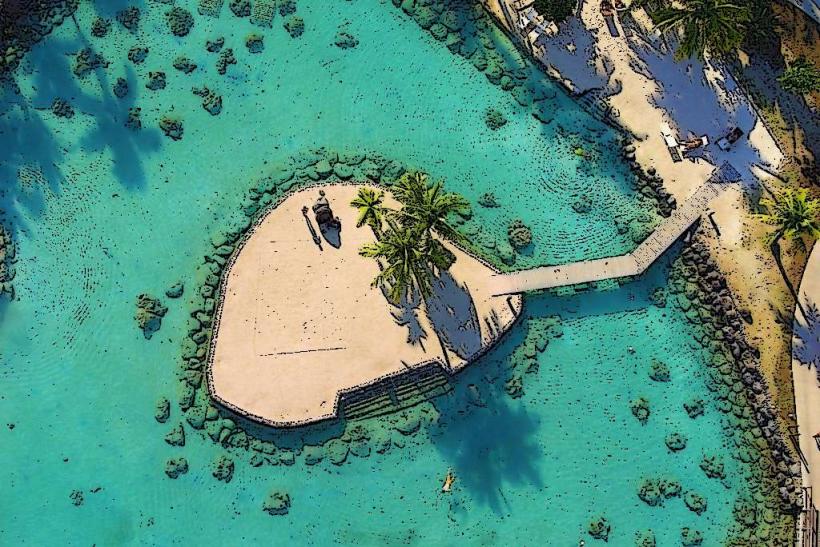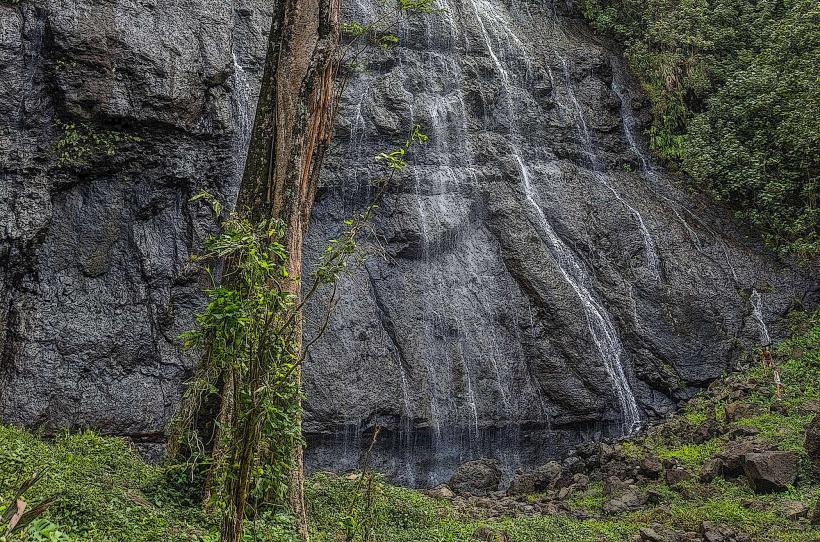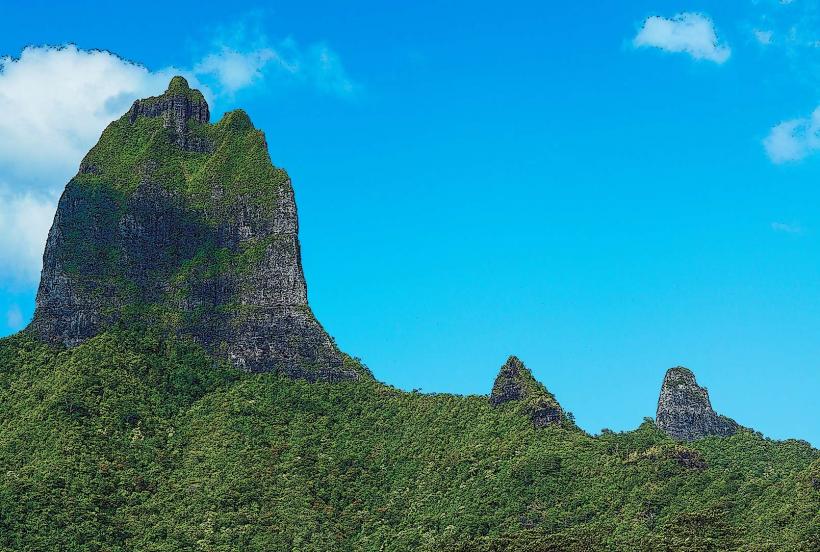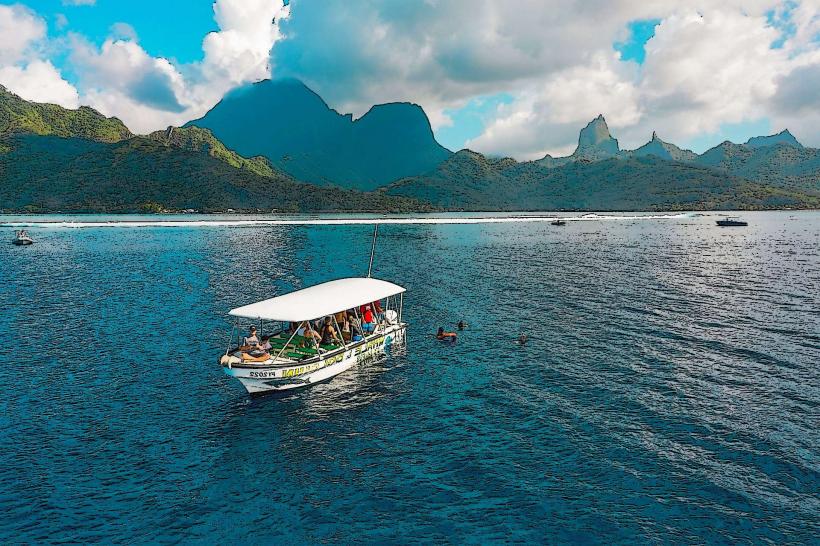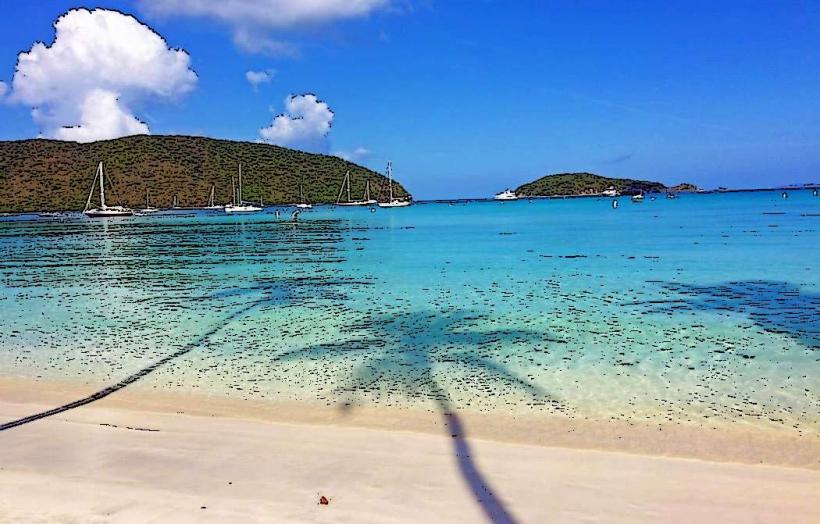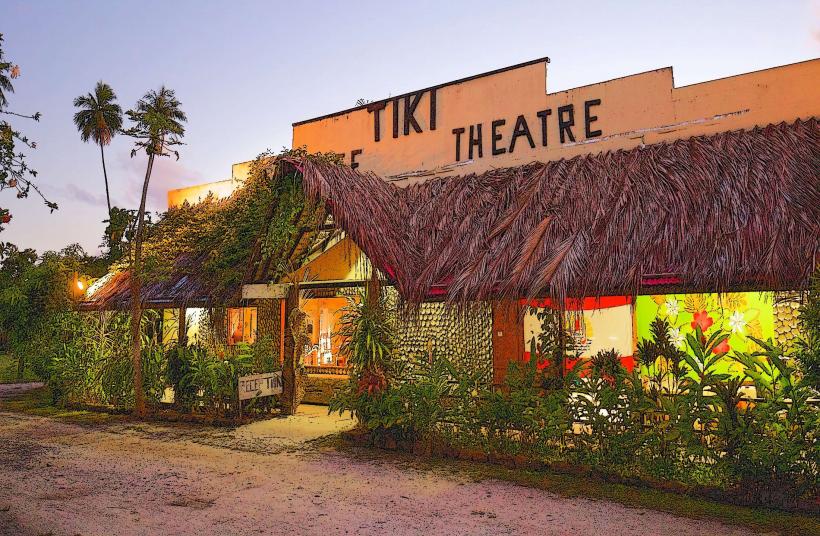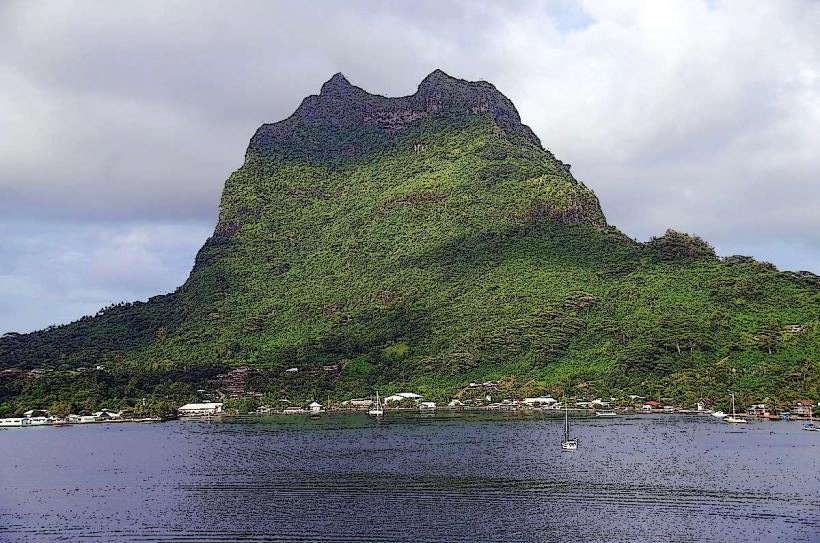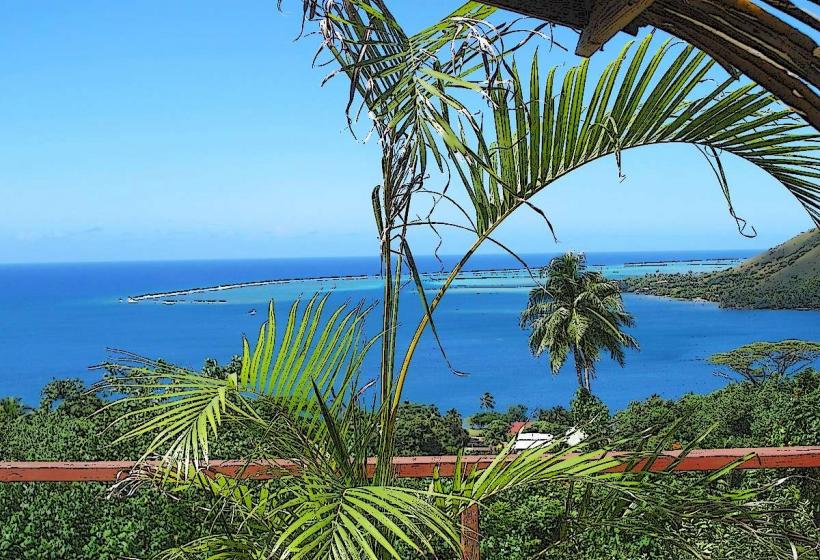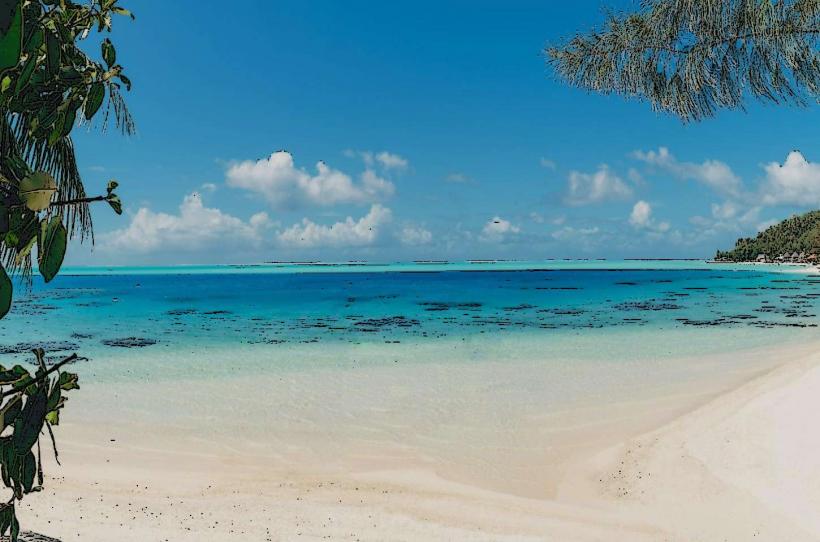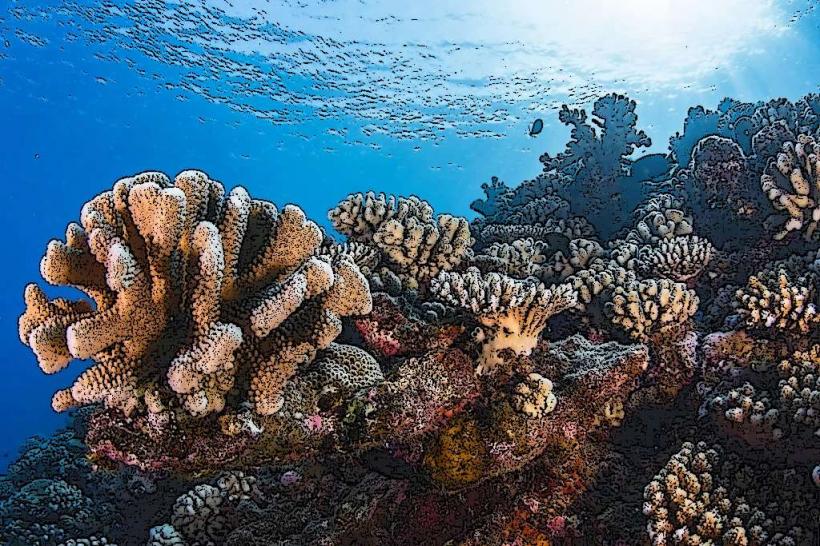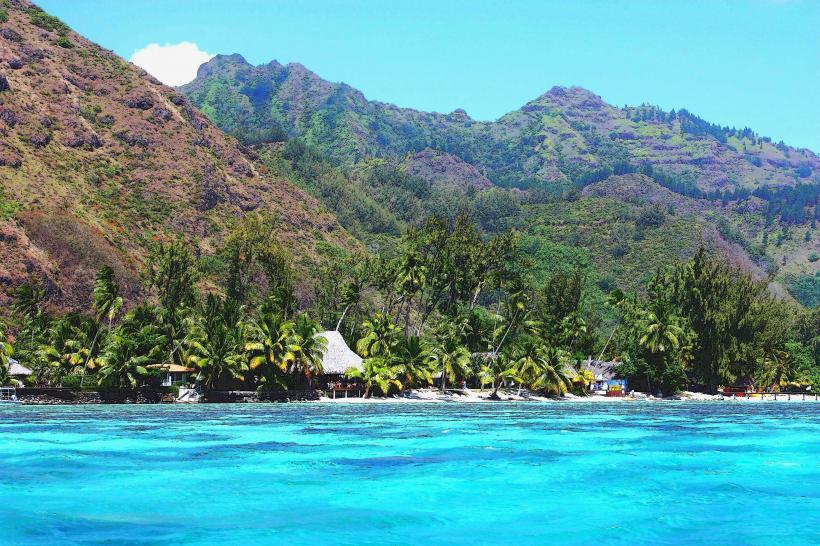Information
City: MooreaCountry: French Polynesia
Continent: Australia
Moorea is a stunning island in the South Pacific, located just a short distance from Tahiti. It is part of the Society Islands archipelago of French Polynesia, known for its breathtaking landscapes, crystal-clear lagoons, dramatic mountains, and pristine beaches. Moorea is a popular destination for tourists seeking a more tranquil, less developed alternative to Tahiti, while still enjoying the beauty and culture of the South Pacific.
Overview of Moorea
- Location: Moorea is located approximately 17 kilometers (11 miles) northwest of Tahiti, with a short boat ride or flight connecting the two islands. Its proximity to Tahiti makes it easily accessible for travelers seeking to explore both islands.
- Size: Moorea is relatively small compared to Tahiti, with an area of about 134 square kilometers (52 square miles). It is roughly 64 kilometers (40 miles) in circumference.
- Population: Moorea is home to around 16,000 residents, living mainly in small villages along the coastline. The island’s capital is Maharepa, and other villages include Papetoai and Afareaitu.
Geography and Landscape
Moorea’s landscape is characterized by towering volcanic mountains, lush valleys, and vibrant coral reefs. The island’s unique geography offers a mix of natural wonders that attract nature lovers, adventure seekers, and those looking to relax in a tropical paradise.
Volcanic Origins:
- Moorea, like many islands in the Pacific, is of volcanic origin. The island is shaped by a central volcanic ridge with several peaks, including the Mount Tohivea (1,207 meters/3,960 feet), the highest point on the island. The jagged mountains and lush valleys are remnants of the island’s ancient volcanic activity.
- The Opunohu Valley and the Afareaitu Valley are two of the island’s most picturesque areas, known for their lush vegetation, waterfalls, and hiking opportunities.
Coral Reefs and Lagoons:
- The island is surrounded by a shallow lagoon protected by a coral reef, making it an ideal location for snorkeling, diving, and water sports. The lagoon is home to vibrant marine life, including colorful fish, rays, and even sharks.
- Moorea’s lagoons are known for their turquoise waters, offering excellent opportunities for boating, kayaking, and paddleboarding. Belvedere Lookout offers panoramic views of the island’s central mountains and the surrounding lagoon.
Beaches:
- Moorea boasts a range of beautiful beaches, from soft white-sand beaches to black-sand shores. The Temae Beach is one of the most famous for its crystal-clear waters and tranquility, while Haapiti Beach offers a quieter, more secluded experience.
Culture and History
Moorea, like Tahiti, has a deep-rooted Polynesian heritage, with influences from French colonial rule.
Polynesian Heritage:
- The island is home to a rich Polynesian culture, with traditional music, dance, and crafts playing an important role in everyday life. Tahitian dance (Ori Tahiti) and music (including drumming and chanting) are central to Moorea's cultural traditions, and performances are often held at local festivals.
- Tiki carvings, weaving, and other crafts are part of the local traditions. Local artisans create beautiful pieces that reflect the island’s spiritual connection to nature and its ancestors.
Historical Significance:
- Moorea has a rich history that dates back centuries, with early Polynesian settlers arriving long before European explorers. The island was later visited by Captain James Cook in the 18th century, and European influence grew after Tahiti was colonized by France in the 19th century.
- Moorea has preserved its Polynesian roots, with locals still speaking Reo Tahiti, although French is the official language.
Tourism and Activities
Moorea is famous for its natural beauty and outdoor activities. Whether you're looking for adventure, relaxation, or cultural immersion, Moorea offers something for everyone.
Water Activities:
- Snorkeling and scuba diving in the crystal-clear waters around Moorea are popular activities. The Lagoonarium (a protected marine park) is a great spot for snorkeling, where visitors can swim with rays, sharks, and schools of tropical fish.
- Shark and ray feeding tours offer a thrilling experience, where visitors can safely interact with blacktip reef sharks and stingrays in the lagoon.
- Paddleboarding, kayaking, and jet skiing are also popular water activities, giving tourists the chance to explore Moorea’s lagoons and beaches.
Hiking and Nature Exploration:
- Moorea has some of the best hiking trails in French Polynesia, with routes leading through lush valleys, up volcanic peaks, and along stunning coastlines.
- The Hike to Belvedere Lookout offers breathtaking views of the island’s lagoons and peaks, while the Opunohu Valley hike takes you through tropical rainforests and past historic marae (Polynesian temples).
- The Afareaitu Waterfalls is another popular hiking destination, where visitors can explore the dense forest and cool off in refreshing natural pools.
Cultural Experiences:
- Visitors can immerse themselves in Moorea’s Polynesian culture by attending a traditional Tahitian dance performance or visiting a local fare (house) to learn about traditional Polynesian life.
- The Moorea Agricultural School offers a chance to learn about the island’s agricultural practices, such as the cultivation of pineapple, which is one of Moorea's main exports.
- Arahurahu Marae, an ancient Polynesian temple, provides insights into Moorea’s early cultural practices and beliefs.
Relaxation:
- For those seeking relaxation, Moorea is home to a variety of luxury resorts, many of which offer overwater bungalows with stunning views of the lagoon and the island’s mountain backdrop. These resorts provide exclusive spa treatments, gourmet dining, and beachfront relaxation.
- Temae Beach is one of the most tranquil beaches on the island, perfect for lounging by the water or taking leisurely walks along the shore.
Climate
Moorea experiences a tropical climate, with warm temperatures year-round. The average temperature ranges between 24°C and 30°C (75°F to 86°F). The island has a rainy season from November to April, which brings warm showers, while the dry season from May to October is the most popular time to visit, with sunny weather and lower humidity.
Why Visit Moorea?
Moorea offers a more relaxed, intimate atmosphere compared to Tahiti, while still providing access to the same stunning natural beauty and rich Polynesian culture. With its breathtaking beaches, clear lagoons, and lush rainforests, Moorea is ideal for those seeking both adventure and relaxation. Whether you're snorkeling in the coral reefs, hiking up volcanic peaks, or experiencing the island’s cultural traditions, Moorea promises a truly unforgettable experience in one of the most beautiful places on Earth.

